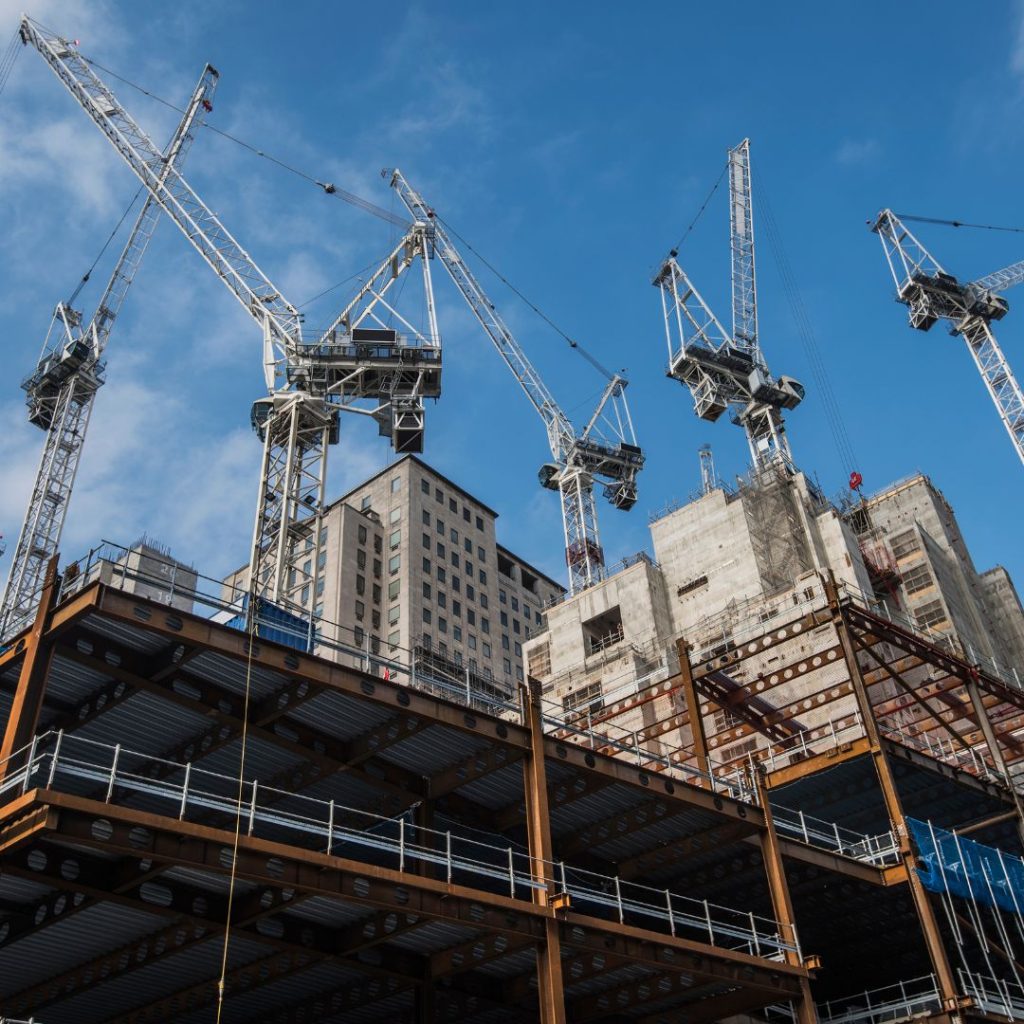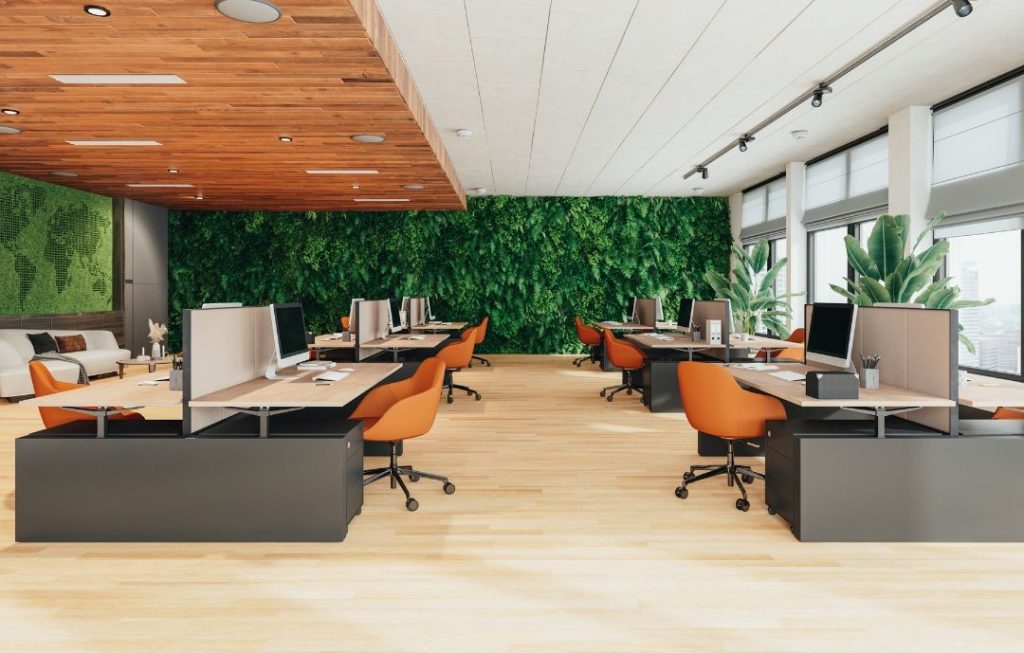LEED Certification Process: How to get started?
By Mz Chaker & EAGC │ October 29, 2024
Mastering the LEED Certification process gives you the tools to maximize your project’s sustainability potential. Learn how to get certified !

As Climate Change and resource depletion become urgent global issues, the need for Sustainable Architecture has never been greater. LEED Certification is at the forefront of this movement, offering a comprehensive framework for designing environmentally friendly, energy-efficient buildings. LEED sets the standard for Green Building, helping reduce the negative environmental impact of construction while promoting healthier, more efficient constructions.
However, despite the growing recognition of LEED certification, many still question its practical value. So, how exactly does LEED certification influence architectural practices globally? How does it apply to different building types? This article explores the role of LEED in shaping modern architecture and the steps required to achieve certification. By answering these key questions, we aim to provide a roadmap for Architects, Developers, and Homeowners seeking a positive environmental impact through Sustainable Building.
1. LEED Certification for Different Building Types
For New Construction
For new construction, LEED Certification offers the chance to incorporate sustainability from the earliest stages. It emphasizes the entire lifecycle of a building, from design to demolition. In this approach, architects, engineers, and contractors collaborate to minimize energy use, reduce water waste, and maximize the use of sustainable materials. Moreover, the building envelope, HVAC systems, and lighting are all designed to ensure maximum efficiency. Thus, LEED helps developers construct structures that are not only environmentally friendly but also contribute positively to occupants’ well-being.
For Existing Buildings
On the other hand, LEED for existing buildings focuses on improving operations and maintenance. That means upgrading systems like heating, ventilation, and lighting to make them more efficient. In addition, retrofitting older structures to meet modern sustainability standards is often more cost-effective than building from scratch. Therefore, LEED Certification for existing buildings ensures that even older constructions can adapt to today’s green building demands.
For Homes
Similarly, LEED Certification focuses on creating environmentally responsible living spaces for homes. From sustainable building materials to energy-efficient appliances, LEED ensures that homes are designed to reduce their carbon footprint. As a result, homeowners can enjoy lower utility bills while contributing to environmental conservation.




For Schools
Meanwhile, LEED for schools emphasizes the creation of healthy, sustainable spaces for learning. This includes designing buildings with improved indoor air quality, natural lighting, and energy-efficient systems. By implementing these strategies, schools not only reduce their operational costs but also provide healthier learning environments. And that’s for students and staff alike.
2. How LEED certification benefits Buildings
LEED Certification offers numerous benefits for buildings, influencing various aspects from environmental impact to financial performance and occupant well-being. Here’s a closer look at LEED advantages for commercial buildings.



Office Spaces
Corporate responsibility is no longer optional, and LEED Certification helps businesses meet sustainability goals. In particular, LEED-certified office spaces are designed to reduce energy consumption, improve air quality, and boost employee well-being. With design features like open-plan layouts and sustainable materials, these spaces reflect the company’s commitment to environmental stewardship. This not only enhances the business reputation but also attracts environmentally conscious clients, investors, and employees.
Retail and Hospitality buildings
Moreover, LEED Certification is increasingly adopted in the retail and hospitality sectors. By designing efficient buildings, LEED-certified projects like hotels, restaurants, and shops can significantly optimize buildings’ operating efficiency. Additionally, eco-conscious consumers are drawn to businesses that align with their values. So, LEED not only improves functional efficiency but also boosts brand loyalty. Companies thus gain a competitive edge in a market increasingly focused on sustainable development.
LEED’s Role in Reducing Operational Costs for Commercial Buildings
Besides boosting reputation, LEED-certified commercial buildings often enjoy reduced operational costs. For instance, energy-efficient HVAC systems, water-saving technologies, and optimized waste management can significantly lower utility bills. Furthermore, many governments offer tax incentives for LEED-certified buildings. In the long run, businesses can see a substantial return on investment as they save money while minimizing their environmental impact.

3. Navigating the LEED Certification Process




Initial Steps
Starting LEED Certification process begins with defining your project scope. This typically involves understanding which LEED rating system applies to your building type and sustainability goals. Whether it’s a new building or an existing structure, it is necessary to assess the project’s current sustainability profile. Once the scope is clear, the next step is assembling a team of LEED professionals.
Registering a Project
After setting goals, the next step is to register the project with the U.S. Green Building Council (USGBC) through the LEED Online platform. From there, it’s necessary to gather and submit documentation that details sustainable practices, energy models, and material choices.
This registration lays the foundation for earning LEED credits, as it helps track and review the project at various development stages. Following this step, developers must document how they meet the precise criteria of LEED standards.
Preparing for the Certification Review Process
Once the project is registered, the LEED Certification review process begins. In this phase, a thorough examination of the project’s sustainability efforts is conducted, which may include third-party inspections. By ensuring compliance with LEED guidelines, projects can achieve certification at various levels, from Silver to Platinum, depending on their performance.
Maintaining the Certification
Finally, it’s important to note that maintaining LEED Certification is an ongoing responsibility, even after certification is achieved. Over time, regular evaluations are necessary to ensure that the building continues to operate efficiently. This includes regular monitoring and maintenance of energy-efficient systems and water-saving technologies. Additionally, periodic re-certification may be required to maintain the building’s LEED Certification status over time. Therefore, ongoing monitoring and adjustments are crucial to upholding LEED standards throughout the building’s lifecycle.
4. Overcoming Challenges: Strategies for Success
Common Obstacles in Achieving the Certification
While LEED Certification offers many benefits, achieving it is not without challenges. For instance, common obstacles include budget constraints, documentation requirements, and difficulty meeting specific standards for energy efficiency or water conservation. Smaller projects may struggle to allocate resources toward certification, and large projects often face complexity in meeting LEED’s wide range of criteria. Thus, it is essential to have a strategic approach to overcome these hurdles.
Innovative Solutions
Overcoming these challenges requires innovative thinking. For instance, integrating energy-efficient technologies early in the design phase can streamline the certification process. Similarly, choosing sustainable materials locally sourced or using recycled products can simplify meeting LEED criteria. By planning ahead and collaborating closely with LEED professionals, projects can overcome common hurdles and achieve certification more smoothly.
Understanding the Certification Costs: What to Expect ?
Regarding costs, it’s essential to understand that LEED Certification can require a significant upfront investment. However, savings in energy, water, and maintenance use often offset the costs in the long term. Moreover, many projects benefit from tax incentives or government rebates for certified buildings, making the financial investment in LEED more manageable over time. So, even though the initial expenses may seem daunting, the long-term financial benefits are substantial.
Maximizing LEED Credits: Unlocking the Full Potential of Your Project
Moreover, to unlock the full potential of a given project, it’s essential to maximize LEED credits. This can be achieved by adopting strategies that exceed basic requirements, such as improving indoor environmental quality or integrating renewable energy sources like solar power. Ultimately, by optimizing the design and material choices, projects can achieve higher certification levels and offer greater recognition and long-term sustainability benefits.
5. The Role of LEED Professionals
What Does a LEED Accredited Professional (AP) Do?
In addition to project management, a LEED Accredited Professional (AP) is vital in guiding projects through the certification process. They help navigate the complex requirements of LEED and ensure that all necessary steps are followed for successful certification. In other words, they ensure that every design aspect meets LEED standards for energy efficiency, sustainable materials, and water use. Likewise, LEED APs work closely with architects and developers to integrate these elements into the project from the earlier stages. Their expertise helps projects achieve the highest possible certification level.
The Importance of LEED Consultants in the Certification Process
Furthermore, LEED consultants are invaluable resources throughout the certification process. Not only do they help project teams understand the LEED requirements, but they also ensure that all documentation is completed correctly. Moreover, consultants offer strategic advice on how to optimize a project’s sustainability efforts to earn more LEED credits. Their insight ensures that projects comply with LEED standards, from initial design through construction and beyond. As such, their role is instrumental in achieving certification efficiently.
How LEED Professionals Ensure Project Compliance and Success
In addition, by working closely with all stakeholders, LEED professionals ensure that each stage of the project complies with the rigorous LEED standards. In practice, they conduct audits, review materials, and provide feedback to keep the project on track. Their expertise not only ensures compliance but also maximizes the project’s sustainability potential. Ultimately, successful certification often hinges on their guidance and oversight.
Collaborating with LEED Experts: Building a Strong Team
Lastly, successful LEED Certification requires a collaborative effort. LEED professionals, architects, engineers, and contractors must work together to meet sustainability goals. In doing so, collaboration ensures that each component of the project aligns with LEED standards, from design to construction. A strong, unified team helps navigate the certification process efficiently and maximizes the building’s sustainable potential.
6. Becoming a LEED Accredited Professional: Elevating Your Career in Sustainable Architecture
The Path to LEED Accreditation
The journey to becoming a LEED Accredited Professional starts with obtaining the LEED Green Associate credential. This initial certification demonstrates a solid understanding of Green Building practices. Afterward, candidates can specialize in Building Design + Construction (BD+C). To earn the LEED AP title, candidates must pass a rigorous exam that tests their knowledge of LEED systems and sustainability.
Benefits of LEED Accreditation
Becoming LEED-accredited opens up a wide range of career opportunities. In particular, architects, engineers, and sustainability consultants who hold this certification are in high demand. Increasingly, companies and clients prioritize hiring professionals who understand sustainable design and can guide projects through LEED Certification. In addition, this credential enhances leadership opportunities within the growing field of Green Building.

LEED AP Exam: Study Tips and Resources
Preparation for the LEED AP exam hinges on a structured study plan. To start, candidates should review the LEED study guides provided by the U.S. Green Building Council (USGBC). Practice exams and study groups can also be invaluable. These resources help candidates familiarize themselves with the exam format and identify areas that need more focus, particularly regarding energy efficiency, water use, and indoor air quality.
By studying rigorously, candidates can confidently pass the exam and become certified professionals. Once accredited, a LEED AP leads Green Building projects from conception to completion, ensuring that every aspect aligns with sustainability goals.
7. The Future of LEED Certification: Trends and Innovations
Upcoming Changes to LEED Standards: What to Watch For ?
As sustainability challenges evolve, so too do LEED standards. Future changes may focus more on net-zero energy buildings and smarter technologies. For instance, innovations will help LEED-certified projects become even more energy-efficient. Building automation and smart energy systems are expected to play a significant role in LEED requirements in the future. Altogether, these trends reflect the growing need for buildings to be sustainable and adaptable to future challenges.
How LEED is Adapting to New Sustainability Challenges ?
LEED continues to adapt by addressing climate resilience, carbon reduction, and human health. New criteria may include measures for biodiversity and social equity in building projects. As demand for sustainability increases, LEED will likely incorporate more stringent requirements for materials and building performance. In this way, LEED remains at the cutting edge of green building practices.
The Future of Sustainable Building Practices Beyond LEED
Preparation for the LEED AP exam hinges on a structured study plan. To start, candidates should review the LEED study guides provided by the U.S. Green Building Council (USGBC). Practice exams and study groups can also be invaluable. These resources help candidates familiarize themselves with the exam format and identify areas that need more focus, particularly regarding energy efficiency, water use, and indoor air quality.
By studying rigorously, candidates can confidently pass the exam and become certified professionals. Once accredited, a LEED AP leads Green Building projects from conception to completion, ensuring that every aspect aligns with sustainability goals.
In conclusion,
LEED Certification presents a transformative force in architecture, driving global sustainability forward. By establishing clear standards, LEED enhances energy efficiency, water conservation, and indoor air quality across the board. This certification not only reduces environmental impact but also significantly boosts occupant well-being.
As mentioned above, LEED shapes architectural practices in various sectors—including residential, commercial, and educational buildings. Notably, each benefits from specific guidelines that foster both efficiency and environmental responsibility. So, how does LEED Certification influence architecture on a global scale? For one, LEED encourages architects to adopt innovative strategies that help minimize waste, harness renewable energy, and optimize resources.
In the future, LEED standards will continue to evolve, addressing new environmental challenges as they arise. In particular, they will integrate advanced technologies that push architecture even further toward a sustainable future. Ultimately, LEED Certification is more than just a credential; it’s a long-term commitment. By following LEED principles, architects, developers, and communities are called to prioritize sustainability and contribute to a resilient future for all.




